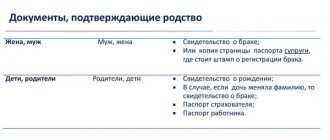Establishment of paternity Establishment of motherhood Establishment of close relationship Legal test Ethnicity
Establishing kinship
- This is
a genetic DNA examination
that allows you to determine
the biological relationship
between the alleged father and child or the alleged mother and child, based on a comparison of DNA sections.
Genetic testing
is also carried out to challenge paternity or maternity in the courts. To carry out the analysis, DNA loci (sections of DNA chains) of the child and the alleged father or mother are compared. The conclusion contains information about genetic research methods, as well as the results of the DNA analysis.
CDC “Health Laboratory” cooperates with leading companies specializing in providing services for establishing biological kinship in the Russian Federation, namely with the British company Medical Genomics Ltd
and the new Russian laboratory
“Medical Genomics”.
British laboratory Medical Genomics Ltd
certified to
ISO-17025
(International Standards Organization) provides a wide range of services in the field of genetic research and is one of the leaders in its industry throughout Europe. It has official accreditation, giving the right to provide DNA analysis results for courts located in all EU countries. The laboratory is equipped with the most modern technological equipment, allowing us to conduct all types of DNA research and obtain the most accurate results.
Russian laboratory "Medical Genomics"
equipped with the latest equipment and meets European standards. The research results are accepted by courts throughout the Russian Federation. One of the main rules of work is absolute confidentiality of research when conducting DNA tests. We maintain anonymity, adhering to international information protection standards.
Among the services provided by the company:
• DNA test to establish biological relationship (paternity, maternity, consanguinity) • Determination of ethnicity by DNA • Drug test (by hair) • Legal DNA test (establishment of biological relationship for court)
Result accuracy
Relationship tests are based on comparing specific DNA fragments of suspected relatives. DNA is inherited by a child in the womb: half of the genes are passed on from the mother, half from the father. Thus, if you compare identical areas in a child and a parent, they will coincide by 50%. DNA sections that are unique or found in an extremely small number of people are analyzed.
Modern analysis technology guarantees 99.99% reliability of the result.
Establishing a close relationship
DNA test
to
establish biological relationship
allows you
to establish the degree of relationship
between
alleged relatives
(grandfather, grandmother, aunt, uncle, nephew, niece).
For DNA analysis
DNA samples
of two
putative relatives
are needed .
Accuracy of results when conducting genetic studies of biological kinship
depends on
the degree of relationship
. Relationship may be:
- unlikely
(if the probability is less than
10%
) - uncertain
(if the probability
is 10-80%
) - probable
(more than
80%
)
Establishing cousins
This test allows you to establish biological relationship
between putative
first
cousins
, or
between
first
cousins
.
To conduct a genetic study,
DNA
samples of two people who are supposedly related are required.
The accuracy of a positive result is 80 %
.
Sibling/stepbrother/sister
This DNA test
allows you to determine whether two individuals are
related
, having one or both common parents, i.e.
whether
they
are
siblings
or
half
-
siblings
or
siblings .
The accuracy of this analysis if the answer is positive is 99 %
, negative –
90 %
.
Twin DNA test
This is a genetic study
allows you to determine whether twins are identical or fraternal.
This DNA test
requires DNA samples from both twins.
The accuracy of the positive result is 99,99 %
, negative –
100 %
.
Cost of the service to establish kinship (cost of DNA analysis):
The cost of the studies indicated on the website may vary depending on the region of Russia!
| Type of study ordered | "Medical Genomics" (Russia) Execution time is 5-7 working days. Number of markers | Medical Genomics Ltd. (Great Britain) Execution time is 12-14 working days. Number of markers | ||
| 20 | 24 | 16 | 24 | |
| ESTABLISHING A CLOSE RELATIONSHIP | ||||
| 2 people | RUB 13,500 | 20,000 rub. | 22,000 rub. | 26,000 rub. |
| Additional close relative | 6,500 rub. | 11,000 rub. | 12,000 rub. | RUB 13,500 |
| ESTABLISHMENT OF COUSIN RELATIONSHIP | ||||
| 2 people | RUB 13,5000 | 20,000 rub. | 22,000 rub. | 26,000 rub. |
| Additional cousin | 6,500 rub. | 11,000 rub. | 12,000 rub. | RUB 13,500 |
| SIBL/STEP BROTHER/SISTER | ||||
| 2 people | RUB 13,500 | 20,000 rub. | 22,000 rub. | 26,000 rub. |
| Additional sibling/half-sibling | 6,500 rub. | 11,000 rub. | 12,000 rub. | RUB 13,500 |
| TWIN TEST | ||||
| 2 people | RUB 13,500 | 20,000 rub. | 22,000 rub. | 26,000 rub. |
| Extra twin | 6,500 rub. | 11,000 rub. | 12,000 rub. | RUB 13,500 |
| AVUNCULAR TEST | ||||
| 2 people (UNCLE/AUNT/NEPHEW/NIECE) | RUB 13,500 | 20,000 rub. | 22,000 rub. | 26,000 rub. |
| Extra twin | 6,500 rub. | 11,000 rub. | 12,000 rub. | RUB 13,500 |
The procedure for collecting biological material
The material for analysis in our laboratory is a buccal swab - it is taken from the inner surface of the cheek using a sterile cotton swab. This is the gentlest way to take a sample for DNA extraction - some other institutions use blood from a vein.
The procedure has no contraindications.
If it is not possible to carry out direct sampling from the subjects (child, intended parents), a toothbrush, chewing gum, earwax on a cotton swab, or hair can be used for analysis.
DNA test to establish maternity
Genetic determination of motherhood
Genetic study to establish maternity
- a test to determine
the biological relationship between mother
and
child
.
Laboratory Medical Genomics
conducts
DNA
to analyze
16
,
20
or
24 STR genetic markers
.
The research is carried out by two independent groups of specialists. the DNA
tests performed are then verified.
The accuracy of the result “ is a mother
” is at least
99.9999%
, the accuracy of the result “
is not a mother
” is
100%
.
For DNA analysis
our laboratory uses a saliva swab taken from the inside of the cheek of study participants.
This method is absolutely painless and does not require much time. A saliva smear
is taken using
a cotton swab yourself
or by a medical professional.
Every DNA test
requires a saliva sample
from the intended mother
and
baby
.
DNA
samples from
the father
or other
alleged mother
.
Cost of maternity determination service (cost of DNA analysis):
| Type of study ordered | "Medical Genomics" (Russia) Execution time is 5-7 working days. Number of markers | Medical Genomics Ltd. (Great Britain) Execution time is 12-14 working days. Number of markers | ||
| 20 | 24 | 16 | 24 | |
| ESTABLISHMENT OF MOTHERHOOD | ||||
| Alleged mother and child | RUB 13,500 | 20,000 rub. | 22,000 rub. | 26,000 rub. |
| Additional child/parent | 6,500 rub. | 11,000 rub. | 12,000 rub. | RUB 13,500 |
Test result
According to the order of the Ministry of Health and Social Development of the Russian Federation dated May 12, 2010 No. 346 “On approval of the Procedure for organizing and conducting forensic medical examinations in state forensic institutions of the Russian Federation”, paragraph 84.12.6, the level of evidence of an expert study in the case of non-exclusion of paternity and maternity should be the following values:
- for a complete trio (mother - child - putative father), provided that the truth of the other parent is considered indisputable - not less than 99.90%;
- for a duet (child - putative father) in the absence of the other parent - not less than 99.75%.
The results of the study to determine paternity and/or maternity are prepared within 10 days. After this time, after collecting the material, you can receive the results in electronic form.
The test results in the form of a package of documents with a hologram and a blue seal can be obtained 4-5 weeks after collecting the material.
Patterns of inheritance of blood group and Rh factor.
Inheritance of blood type is controlled by an autosomal gene. The locus of this gene is designated by the letter I, and its three alleles by the letters A, B and 0. Alleles A and B are equally dominant, and allele 0 is recessive to both of them. There are four blood types. The following genotypes correspond to them: First (I) 00 Second (II) AA; A0 Third (III) BB; B0 Fourth (IV) AB
Example 1:
wife has the first blood group (00) husband has the second blood group and is homozygous (AA) wife 00 + husband AA gametes: 0 0 A A child: A0 A0 A0 A0
All children have a second blood group and are heterozygotes for this trait.
Example 2:
wife has the first blood group (00) husband has the second blood group and is a heterozygote (A0) wife 00 + husband A0 gametes: 0 0 A 0 child: A0 A0 00 00
In a given family, in 50% of cases it is possible to have a child with a second blood group, and in 50% of cases the child’s blood type will be first.
Inheritance of the Rh factor is encoded by three pairs of genes and occurs independently of the inheritance of blood type. The most significant gene is designated by the Latin letter D. It can be dominant - D, or recessive - d. The genotype of a Rh-positive person can be homozygous - DD, or heterozygous - Dd. The genotype of a Rh negative person may be dd.
Example 1:
wife has a negative Rh factor (dd) husband has a positive Rh factor and is a heterozygote (Dd) wife dd + husband Dd gametes: dd D d child: Dd Dd dd dd
In a given family, the probability of having a Rh-positive child is 50% and the probability of having a Rh-negative child is also 50%.
Example 2:
wife has a negative Rh factor (dd) husband has a positive Rh factor and is homozygous for this trait (DD) wife dd + husband DD gametes: dd DD child: Dd Dd Dd Dd
In this family, the probability of having a Rh-positive child is 100%.
Determination of paternity and maternity for the court
Establishing maternity and paternity for the court differs from the procedure described above only in the composition of the package of documents. The use of DNA analysis results in court as indisputable evidence of confirmation or refutation of relationship is carried out in the presence of an officially certified laboratory conclusion.
You can go through the procedure for determining kinship in all medical centers of our company in Rostov-on-Don and Bataysk. At the same time, we guarantee confidentiality in the analysis and storage of the results obtained.
Features of the course of pregnancy with Rh factor incompatibility. Rhesus conflict.
Hemolytic disease of the fetus and newborn is a condition that occurs as a result of incompatibility of the blood of mother and fetus for certain antigens. Most often, hemolytic disease of the newborn develops due to Rh conflict. In this case, the pregnant woman has Rh-negative blood, and the fetus has Rh-positive blood. During pregnancy, the Rh factor with the red blood cells of the Rh-positive fetus enters the blood of the Rh-negative mother and causes the formation of antibodies to the Rh factor in her blood (harmless to her, but causing the destruction of the fetal red blood cells). The breakdown of red blood cells leads to damage to the liver, kidneys, brain of the fetus, and the development of hemolytic disease of the fetus and newborn. In most cases, the disease develops quickly after birth, which is facilitated by the entry of a large number of antibodies into the baby’s blood when the integrity of the placental vessels is disrupted.
Less commonly, hemolytic disease of the newborn is caused by group incompatibility of the blood of mother and fetus (according to the AB0 system). In this case, due to agglutinogen (A or B), present in the fetal red blood cells but absent in the mother, antibodies to the fetal red blood cells are formed in the maternal blood. Most often, immune incompatibility manifests itself when the mother has blood group I, and the fetus has blood group II, and less often, blood group III.
The process of immunization of a pregnant woman begins with the formation of antigens in the red blood cells of the fetus. Since antigens of the Rh system are contained in the blood of the fetus from the 9-10th week of pregnancy, and group antigens - from the 5-6th week, in some cases early sensitization of the mother’s body is possible. The penetration of antigens into the maternal bloodstream is facilitated by infectious factors that increase the permeability of the placenta, minor injuries, hemorrhages and other damage to the placenta. As a rule, the first pregnancy in an Rh-negative woman, in the absence of previous sensitization of the body, proceeds without complications. Sensitization of the body of a Rh-negative woman is possible through transfusions of incompatible blood (carried out even in early childhood), during pregnancy and childbirth (if the fetus has Rh-positive blood), after abortions, miscarriages, and operations for ectopic pregnancy. According to the literature, after the first pregnancy, immunization occurs in 10% of women. If a woman with Rh-negative blood avoided Rh immunization after her first pregnancy, then during a subsequent pregnancy with an Rh-positive fetus, the probability of immunization again is 10%. Therefore, after any termination of pregnancy in a woman with Rh-negative blood, it is necessary to administer anti-Rhesus immunoglobulin for prophylactic purposes. During pregnancy, in a woman with Rh-negative blood, it is necessary to determine the titer of Rh antibodies in the blood over time.
Question 3:
What dose of anti-Rhesus immunoglobulin and in what time frame is administered to a woman with Rh-negative blood after childbirth? Is it true that the administered dose of the drug should be increased after a caesarean section?
Answer
: Women with Rh-negative blood after childbirth are given anti-Rhesus immunoglobulin in an amount of 1-1.5 ml (200-300 µg) no later than 24-48 hours after birth for prophylactic purposes. During surgical interventions, transplacental bleeding may increase, and therefore the administered dose of anti-Rhesus immunoglobulin is increased by 1.5 times.
Question 2:
I have a negative Rh factor. I recently had an abortion. Will I be able to have children? Is there a chance that the baby will be sick during the next pregnancy?
Answer
: The presence of a negative Rh factor does not directly affect conception. During an abortion (if it was performed at 9-10 weeks of pregnancy), there was a possibility of sensitization of the body to the Rh factor. Before a planned pregnancy, it is advisable to do a blood test for the presence of antibodies to the Rh factor.
What is a genetic profile and why is it needed?
Both science and forensics use special DNA sequences. They are called DNA markers. These are short stretches of DNA that are repeated with a certain pattern. In humans, DNA contains two copies of these markers, one from the father and one from the mother. They vary from person to person in length and sequence.
The combination of DNA markers represents a person's genetic profile. The more different markers are considered in the analysis, the more accurate the resulting genetic profile, but at the same time the cost of the study increases. Most laboratories use a minimum of 16 short sections of the chain to create a genetic profile for each paternity determination, as well as for family kinship testing, identification, etc.
Love and blood
4K 6 min.
In Russia, 14 percent of men raise other people's children. Even a mother does not always know who the true biological father of her child is.
Vladimir TIKHOMIROV
“Blood issues are the most difficult issues in the world!” - said one of Bulgakov’s heroes. However, nowadays people have got their hands on the easiest, at first glance, way to understand all the intricacies of consanguinity. It would seem that it could be simpler - you donate blood or saliva for DNA analysis, and after a couple of weeks you receive a scientifically based answer to all your doubts: are you of the same blood as your son or daughter.
“Our practice shows that in Russia up to 14 percent of fathers are not biological,” says doctor Ilya Barkov from the Laboratory of Clinical Genetics of the Scientific Center for Obstetrics, Gynecology and Perinatology of the Russian Academy of Medical Sciences. “Moreover, experience shows that the child’s mother does not always know who the child’s true biological father is.”
The situation abroad is no better. “One in 25 men in the UK is raising someone else’s child,” says Professor Mark Bellis from the University of Liverpool, who published the results of a genetic analysis of 600 thousand newborns in the prestigious scientific journal The Journal of Epidemiology and Community Health. The professor himself is at a loss today: “20 years ago, doctors preferred not to disclose such information if they received it, except in cases where it was important for the child’s health. But today we are massively conducting genetic tests for family diseases, and doctors simply do not know how to handle the information from DNA tests, which say that a child has the heredity of a completely different person. We ourselves have opened a Pandora's box of sexual secrets and lies and have no idea how it will all turn out. Indeed, for any man, information that he is not the biological parent of a child whom he previously raised as his son or daughter can have the most serious consequences - lead to the breakdown of the family, affect the health of the child himself...”
BUSINESS UNDER SUSPICTION
Indeed, probably no other scientific invention has brought people as many misfortunes and family dramas as DNA analysis (or genomic fingerprinting) to establish paternity. Previously, everything was somehow simpler - they say, the eyes looked like dad’s, and the ears looked like grandfather’s, well, okay. In Soviet times, paternity was established only by blood type, but this method did not provide any guarantees. And there was no particular need for this - to assign alimony to the court, the mother’s statement and the neighbors’ testimony that the plaintiff and defendant were running a joint household were sufficient.
But then the human genome was discovered, and a little later a method of genetic “determination of consanguinity” appeared. This name developed historically, since initially the method itself was invented for completely sad examinations - forensic identification of human remains or corpses. Then it began to be used to determine genetic predisposition to a number of cancer diseases. But paternity tests became a kind of commercial by-product, which from the late 80s began to be promoted to the masses by the Anglo-American corporation Cellmark Diagnostics, which bought a patent for the use of genomic fingerprinting technology. Advertising was provided at the highest level - all the tabloids in the world covered how pop stars like Paul McCartney and Eddie Murphy, using DNA tests, fought off crazy fans who demanded that the stars be recognized as the fathers of their children through the courts. And Cellmark Diagnostics has achieved its goal - in the United States alone, more than 200 thousand DNA tests are performed annually to establish paternity. Recently, DNA tests have even begun to be sold in New York City restaurants along with condoms and pregnancy tests.
In Russia, DNA testing technology appeared only in 1991. Initially, only two institutions were involved in this technique - the Russian Federal Center for Forensic Medicine (RFCSME) and special military unit number such and such, simply put - the FSB. Where, of course, deceived husbands were denied entry.
But even in the RFCSME, tests to establish paternity were done only by court decision in particularly controversial cases - when investigating cases of intentional or unintentional substitution of children in maternity hospitals. And so, the technique of establishing blood relationships was mainly used to identify the remains of the dead - for example, to identify the remains of Tsar Nicholas II and his family.
But the market has done its job here too - today you can get a DNA test in dozens of laboratories for a reasonable fee. The magic key for the penetration of commercial structures into such a delicate area was the magic word “research” - they say, not a single law prohibits a person with a higher medical education from “researching” the polymerase chain reaction (PCR) of deoxyribonucleic acid cells. The logical result is that, according to experts, over the past 5 years the number of people wishing to undergo analysis using the genomic fingerprinting method has increased 8 times in Russia! As a result, divorces and children abandoned by non-fathers are increasing.
But do citizens know what DNA fingerprinting actually is? And can the analysis of repeating alleles in chromosome loci serve as the ultimate truth in breaking human destinies?
FOUR LETTERS
Let's start with the very basics of molecular genetics. So, the DNA heredity molecule is actually a very long chain of four types of amino acids: adenine, thymine, guanine and cytosine. For simplicity, a DNA molecule on paper is depicted as a sequence of four capital letters from the names of nucleotides - A, T, G and C. For example: TCAGTAAGCACGT. This is a very small fragment of the gene, since its complete transcript consists of hundreds of thousands of letters. And each such chain of “letters” represents, as it were, the simplest step-by-step instructions for each cell of the body, which describes exactly what and when the cell needs to do in order to fulfill the general plan for the development of the body. But besides this, at the end of this huge “word” there is also other information written down, the meaning of which none of the scientists today still understands.
Geneticists suggest that it is these “meaningless” combinations of “letters”-amino acids that can serve to identify each individual. However, this is just a hypothesis. Nevertheless, it is believed that the repeatability of these symbols is strictly individual for each living creature - like human fingerprints or the pattern of the iris. Well, maybe not individual - after all, no one has checked the DNA of all people on Earth, but nevertheless, scientists are sure that the probability of meeting a person with exactly the same set of “letters” in the genome is extremely small.
Since the father passes on exactly half (23 out of 46) of his chromosomes to the child, it is natural to assume that he also passes on half of his unique “letter-acid” cipher to him. Therefore, to determine paternity, you only need to first remove from the test fragments of the child’s DNA that are similar to the mother’s, and then the remaining fragments inherited from the biological father are compared with the DNA fragments of the putative father.
PROGRAMMED ERROR
But this is easy only in theory. In practice, everything is much more complicated. For example, to more or less accurately establish the fact of consanguinity, it is necessary to compare at least 25 DNA loci (sections).
“The reliability of DNA testing is very high, but there is always a possibility that somewhere in the world there is a person who has the same characteristics as the person being tested,” say specialists from the Center for Molecular Genetics. “It is believed that the examination can give an absolutely accurate negative answer: “Not the father.” We immediately see that the child does not have the signs that are present in the potential dad. But in case of a positive result, the accuracy of the analysis is 99.99 percent. An error is possible in one case out of 10 thousand.
That is, this figure means that in Moscow alone you can find 1,400 men who may have the same genetic characteristics as the alleged father and, accordingly, be the father of this child.
But the declared analysis accuracy of 99.99 percent is the maximum limit of examination. In practice, the official wording from the examination report “paternity is practically established” can mean a 99 percent probability. That is, in this case there will already be 140 thousand potential “fathers” in Moscow. Agree, there is something to think about here.
The possibility of error is also recognized by the international Paternity Testing Commission (PTC) under the International Society of Forensic Genetics (ISFG), which has developed uniform standards for paternity testing for doctors around the world. According to these recommendations, to insure against all kinds of claims, geneticists should not establish paternity at all, but can only calculate the percentage probability of paternity. That being said, there are two big differences.
In the end, we cannot rule out a common mistake when conducting research. Many geneticists, on condition of anonymity, admit that errors in DNA tests are a completely natural phenomenon caused by the notorious human factor.
“DNA analysis is the most accurate method for determining paternity only in theory,” says geneticist Andrei N. “But since it is very sensitive, it is quite easy for people who work with it to make a mistake. To distort the test results, it is enough for a microscopic piece of the laboratory assistant’s skin or hair to accidentally mix with the DNA sample being analyzed. Laboratory assistants may simply confuse the samples. So anything is possible...
DNA is inherited from both biological parents
DNA, or deoxyribonucleic acid, is present in all cells of the body. It consists of four different components called nitrogenous bases: adenine (A), thymine (T), cytosine (C), guanine (G). These four types of DNA “links” are located, like the letters of the alphabet, in strictly defined sequences, in which the “instructions” are encrypted, allowing our body to perform all its functions. DNA contains information that determines our physical characteristics, such as facial features, height, and even the possibility of certain diseases. Human sex cells—the father's sperm and the mother's egg—contain half the normal amount of DNA found in all other cells in the body. During conception, they fuse to form a fertilized egg called a zygote. It contains a complete and unique set of DNA molecules, created by combining DNA strands from both parents. The zygote divides, forming an increasing number of cells and ultimately turning into an embryo. The fact that all cells that form a new organism contain the same DNA—half paternal and half maternal—allows scientists to use simple and convenient sampling methods for paternity and relationship testing. It is possible to take samples at any age and from almost any structural element of the body (hair, mucous membrane scraping, etc.) and get the same results, because these samples contain the same DNA.










